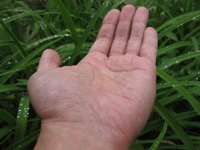Pittsburgh Chess Club Championship 2013, Round 4: fascinating attacking-defending game!!
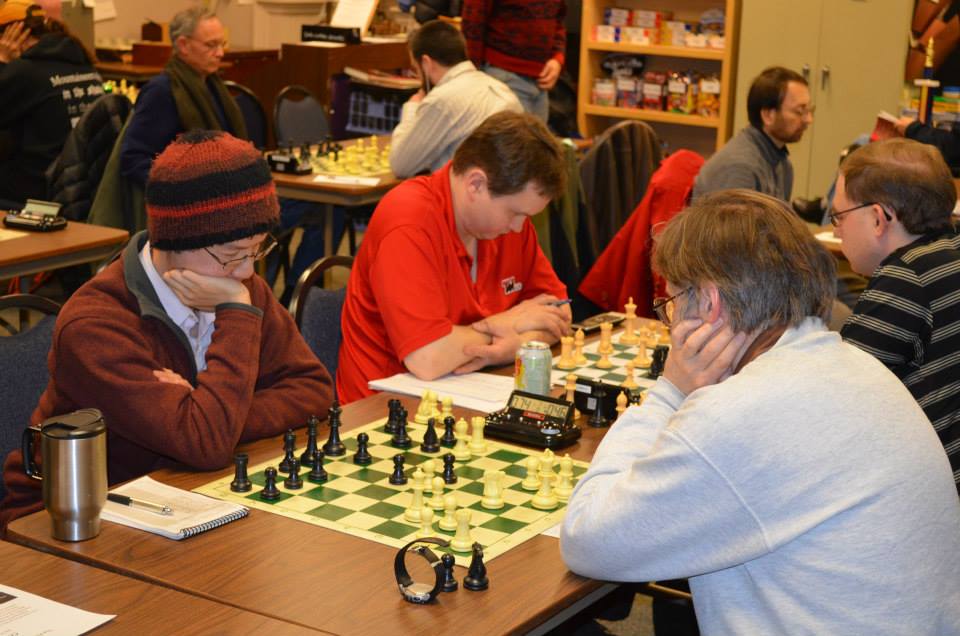
Round 4 of the annual Pittsburgh Chess Club Championship had me playing one of the most fascinating games I have played in my entire life. My opponent tried to wipe me off the board with a brute-force attack in the early moves of the opening and I managed to defend, but there were various subtleties involved. He engaged in sacrifice after sacrifice, not all sound, but all interesting.
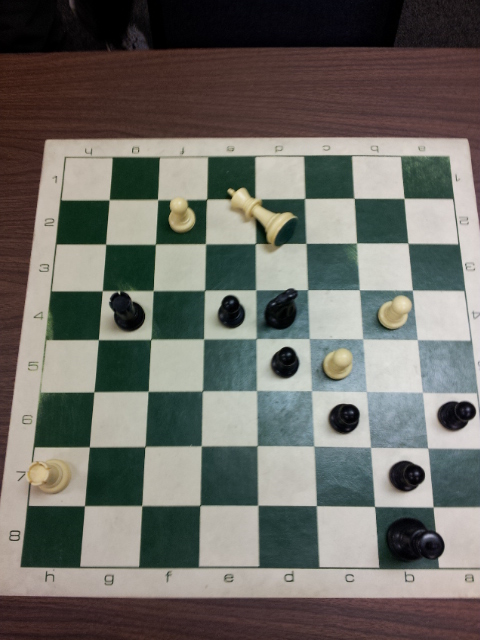
My complete annotated game
At your convenience, you can enjoy playing over the game with my annotations, including diagrams.
In fact, it is necessary to read the detailed annotations to get a full picture of all the best moves that neither player saw but existed.
Preparation
As I mentioned in my report on the previous round, I knew that for today, I would face Peter Jansen (currently rated 1999), and that I know how he plays the openings. I knew that he tries to play solidly for a draw against stronger players, so I had to figure out a way to maximize my winning chances. I planned a particular ultra-aggressive opening as Black against him, the Dutch Defense, the goal of which is avoid early contact while preparing to stake out a claim in the center as well as on the King side.
In particular, I remembered that some years ago, Peter had been White against Grandmaster Alexander Shabalov (who is a four-time winner of the US Chess Championship, and also happens to live in Squirrel Hill in Pittsburgh) and Shabalov had used the Dutch as Black against him. (Actually, I had misremembered the occasion as a simultaneous exhibition; after our game, when I told Peter about my preparation, he said that the game had been an actual tournament game. I looked and verified that it was a Pittsburgh Chess League game in 2007.)
Overview of my game
The opening
Peter played exactly as I predicted he would, and we reached a position that I had concluded was fine for Black. After playing h6 to kick White’s Bishop, I fully expected a retreat and then a slow progression to an interesting middlegame:
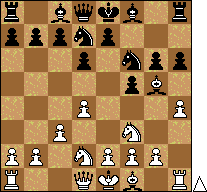
Instead, Peter uncorked a series of remarkable disruptive sacrificial ideas!
First, he did not retreat the Bishop, but instead played Qb3 exploiting the weakness of Black’s e6 and f7 squares:
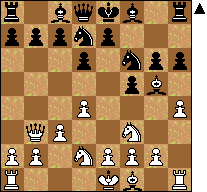
White’s Bishop cannot be captured by Black. (See the annotations for details.) So I calmly developed with Bg7. Then Peter went totally wild with h5, which is not really sound, but is definitely interesting. Not only did he leave the Bishop unprotected, but he was sacrificing the h Pawn.
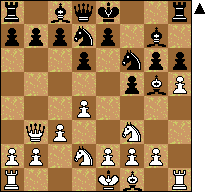
I calmly took the Pawn. He followed up with the wild Nh4 that continued to offer the Bishop as a sacrifice while attacking Black’s g6 Pawn:
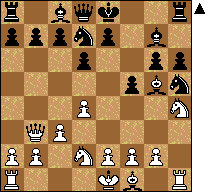
I did not take, but defended g6 while also opening up a defense of the e6 square. He then continued by sacrificing his Knight on g6.
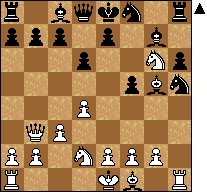
This is not a true sacrifice, because he gets the Knight on h5 in return. But the Bishop on g5 is still being offered.
It turns out that this whole series of blows by White was unsound, and could have been refuted calmly by Kf8:
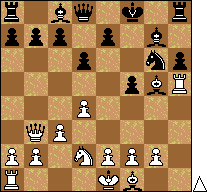
But I saw a related idea and did not play the correct refutation, so the game continued to be interesting rather than ending quickly. I played d5, which has a similar idea but has the drawback of allowing a good tactical save by White.
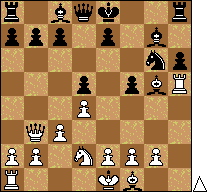
White could have used a tactic to win the Pawn on d5 while saving his Bishop from being trapped by attacking Black’s Knight on g6. Oops! But neither Peter nor I saw this resource, and he did not play it.

Instead, he played a completely unsound sacrifice e4 that I could have punished by taking the Bishop on g5:

But in a collective hallucination, neither of us saw that the Bishop was in danger, because for so many moves up till d5, it was not in danger!
Instead, I opted to take the Pawn on e4.
The middlegame
So White’s opening attack finally came to an end, and we reached a middlegame in which Black has to get his King to safety but is one Pawn up. Objectively, the game is actually quite equal. I was happy to have reached this middlegame, after all the turmoil, not having seen the big refutations earlier.
After some natural moves, after which both sides were castled Queen side, I expected some kind of struggle on the King side in which White had pressure against Black’s h6 Pawn and possibly could regain it at some point.
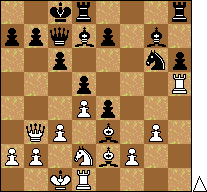
Instead, Peter blundered with another sacrifice, or so I thought. It turns out from extensive computer analysis that the sacrifice was actually sound and should have led to an equal position through some extremely fascinating play. Let me explain.
Peter played Nxe4, with the idea of regaining the piece after Qf7:
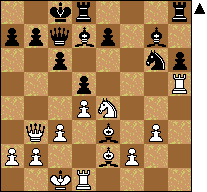
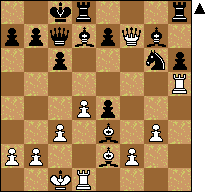
It turns out that White does not regain the piece, after Black defends (as I did) with Qd6:

It turns out that White has a miraculously deep move Ra5 that equalizes through threats on Black’s King!! But neither of us saw this.
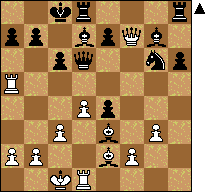
Instead, Peter blundered straight into having his Queen trapped:
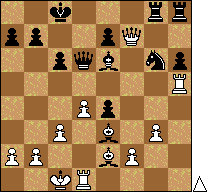
The game was effectively over at this point.
The endgame
However, Peter kept playing, and we ended up going into an endgame that was clearly lost for him (being a piece down):
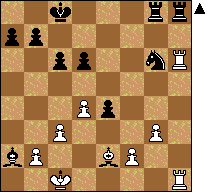
The rest of the game is only worth looking at for its efficient technique.
Peter finally resigned after losing more and more material:

Lessons learned from my game
- Don’t take for granted that your opponent will play in exactly the same style you’ve seen for years.
- I don’t think I have ever in my entire life played a game in which I have been offered so many sacrifices. It is important to keep one’s cool and try to figure out the truth of each one.
- A sacrifice could be sound, yet not work because it is not followed up properly.
- A sacrifice could be unsound, yet work because the defender fails to respond correctly.
- It takes careful calculation to determine which sacrifices are sound and which are unsound, and we humans do not always see the full truth, but computers do.
What next?
For round 5 next week, I have White against fellow Expert Richard Edahl. He is doing pretty well in the tournament, considering that, as he mentioned when he entered the tournament, he has not played in a single chess tournament in over twenty years! So I expect an interesting fight. I have no idea how idea how he plays, so this will be new and exciting.
Conclusion
I give credit to Peter for completely surprising me by attacking and sacrificing aggressively for a win, totally contrary to how I’ve usually seen him play. The result was a fascinating game.
